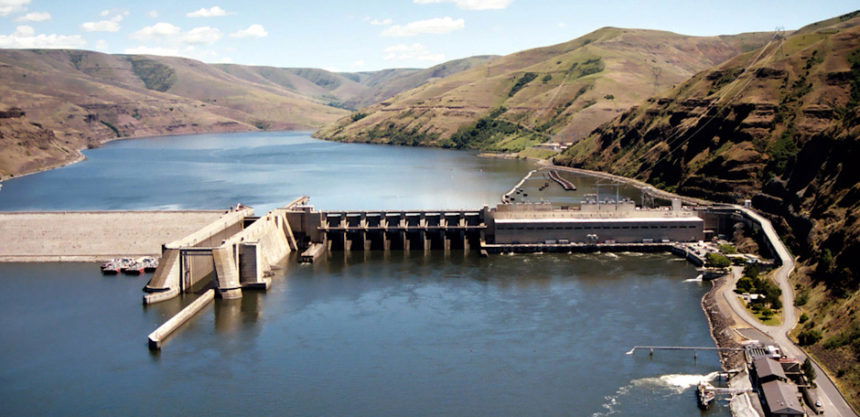US: 4 Snake River dams will not be removed to save salmon

SPOKANE, Wash. (AP) — The U.S. government says four huge dams on the Snake River in Washington state will not be removed to help endangered salmon migrate to the ocean.
Friday's announcement thwarts the desires of environmental groups that fought for two decades to breach the structures.
The Final Environmental Impact Statement was issued by the U.S. Army Corps of Engineers, Bureau of Reclamation and the Bonneville Power Administration, and sought to balance the needs of salmon and other interests.
The plan calls for spilling more water over the dams at strategic times to help fish migrate faster to and from the ocean.
Environmental groups panned the Trump administration plan as inadequate to save salmon, an iconic Northwest species. They contend the dams must go if salmon are to survive.
"This plan is not going to work,″ said Joseph Bogaard, director of Save Our Wild Salmon.
“The federal failure to remove the dams despite clear supporting science is a disaster for our endangered salmon and orcas,” said Sophia Ressler of the Center for Biological Diversity.
Scientists warn that southern resident orcas are starving to death because of a dearth of chinook salmon that are their primary food source. The Pacific Northwest population of orcas — also called killer whales — was placed on the endangered species list in 2005.
Todd True of Earthjustice called the plan “a slap in the face to Native American Tribes, rural fishing communities and anyone in the Northwest who cares about the future of our salmon, orcas and the economic well-being of our river and ocean communities.″
The dams have many defenders, including Republican politicians from the region, barge operators and other river users, farmers and business leaders.
Three Republican members of Congress from Washington state hailed the decision.
"We have always said that our rivers and the benefits they provide are the lifeblood of our region,” Reps. Dan Newhouse, Cathy McMorris Rodgers and Jaime Herrera Beutler said in a joint statement
"The benefits of the dams along the mighty Columbia and Snake rivers are far too precious for our region to go without,″ they said. "We are proud to see a comprehensive, science-based process come to fruition.″
The four hydroelectric dams were built from the 1960s to the 1970s between Pasco and Pomeroy, Washington. Since then, salmon populations have plunged.
Read more at: https://apnews.com/42ebe3eca4248df7d5a1e8ebeac23a0a